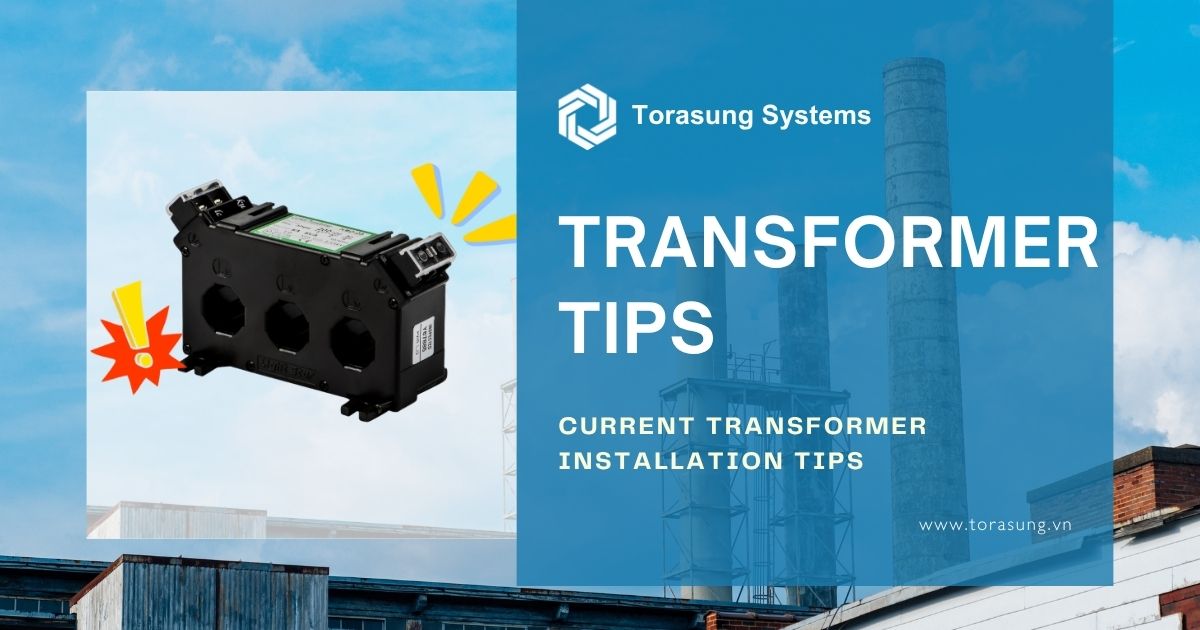Current transformers (CTs) play a crucial role in monitoring and protecting electrical systems. They are widely used to step down high current levels to measurable values for metering and protection devices like relays or energy meters.
Correct installation of a current transformer ensures measurement accuracy, safety, and system reliability. In this article, we will discuss the most important considerations when installing CTs in industrial and commercial power systems.
What Is a Current Transformer?
A current transformer is a type of instrument transformer that produces a reduced current accurately proportional to the current in its primary circuit. It enables safe monitoring of high-current equipment by converting large currents into small, manageable signals for devices like ammeters, energy meters, and protection relays.

Why Proper CT Installation Matters
Improper installation of current transformers can result in:
- Inaccurate current readings
- Malfunction of protection relays
- Excessive heating
- Safety hazards
To avoid these issues, it is essential to follow best practices and manufacturer guidelines during installation.
Key Considerations When Installing Current Transformers
1. Correct CT Orientation
CTs must be installed with the correct orientation. Always check the markings:
- P1 (or K) should face the power source
- P2 (or L) should face the load
Incorrect orientation will reverse polarity and may affect relay and metering accuracy.
2. Proper Grounding
Grounding is essential for electrical safety and shielding against electromagnetic interference. The secondary side of the CT should be grounded at only one point—typically at the measuring or protection device. Multiple grounding points can create circulating currents and errors.
3. Secondary Circuit Must Always Be Closed
Never leave the secondary winding open when the primary current is flowing. An open secondary can generate dangerously high voltages, posing risks to equipment and personnel. Always short the secondary terminals when the CT is not in use.
4. CT Burden and Cable Length
Ensure that the total burden (impedance of connected devices and wiring) does not exceed the CT’s rated burden. Excess burden reduces measurement accuracy and may cause voltage drops. Use short, thick cables to minimize impedance.
5. Mounting Location and Position
Install CTs on clean, dry, and vibration-free surfaces. Avoid mounting near high-heat areas or sources of strong magnetic fields, which can distort readings.
For split-core CTs, ensure the core is closed tightly, and the mating surfaces are clean and aligned properly.
6. Selection of CT Ratio
Choose the appropriate current ratio based on your application. A CT with a ratio too high or too low may result in inaccurate measurements or failure of protection devices. Common ratios include 100/5, 200/5, 400/5, etc.
7. Labeling and Identification
Label CTs clearly with their current ratio, polarity, and application (metering or protection). Proper labeling avoids confusion during maintenance or troubleshooting.
8. CT Accuracy Class
Use the correct accuracy class depending on the application:
- Class 0.2, 0.5, 1.0 for metering
- Class 5P, 10P for protection
Using a protection CT for metering can result in poor accuracy, and vice versa.
9. Use of Shorting Blocks and Terminal Blocks
Install shorting terminals or blocks for safety during maintenance. This allows operators to safely disconnect meters or relays without exposing the secondary circuit.
10. Regular Inspection and Maintenance
Inspect CTs regularly for:
- Loose connections
- Signs of overheating
- Corrosion or moisture
- Cleanliness of insulation and terminals
Regular maintenance improves system reliability and lifespan of the CTs.
Conclusion
Proper installation of current transformers is vital for the accurate functioning of electrical measurement and protection systems. By following these key CT installation guidelines, you ensure safety, performance, and compliance with industry standards.
Whether you’re designing a new electrical panel or upgrading an existing system, make sure your current transformer setup follows best practices to avoid costly mistakes and ensure long-term system efficiency.




